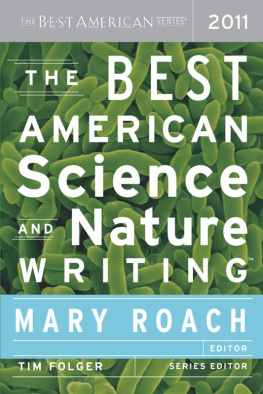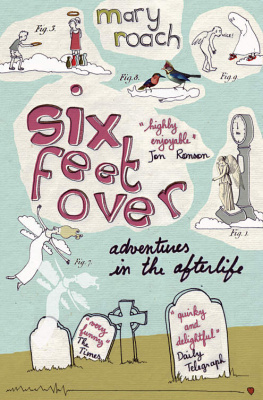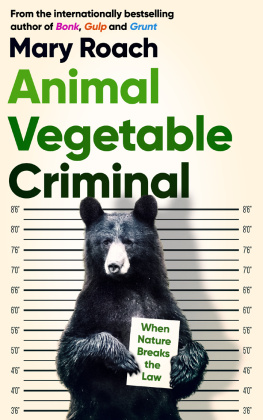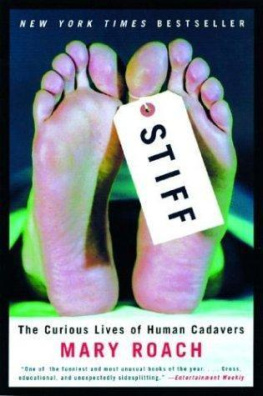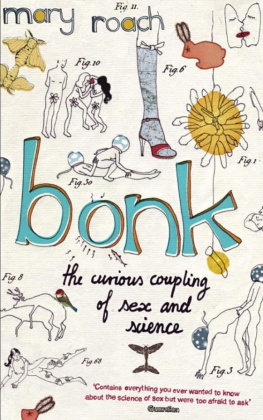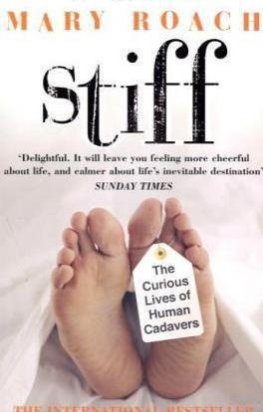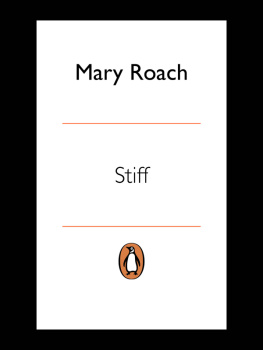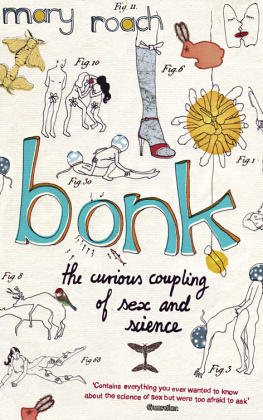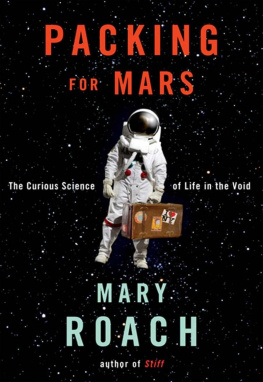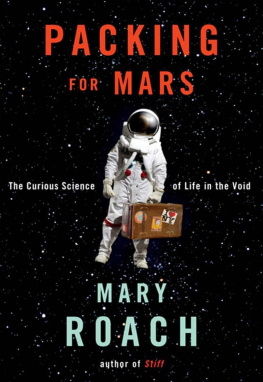
For Lily and Phoebe,
and my brother Rip
Contents


I N 1968 , on the Berkeley campus of the University of California, six young men undertook an irregular and unprecedented act. Despite the setting and the social climate of the day, it involved no civil disobedience or mind-altering substances. Given that it took place in the nutritional sciences department, I cannot even say with confidence that the participants wore bell-bottomed pants or sideburns of unusual scope. I know only the basic facts: the six men stepped inside a metabolic chamber and remained for two days, testing meals made from dead bacteria.
This was the fevered dawn of space exploration; NASA had Mars on its mind. A spacecraft packed with all the food necessary for a two-year mission would be impracticably heavy to launch. Thus there was a push to develop menu items that could be bioregenerated, that is to say, farmed on elements of the astronauts waste. The title of the paper nicely sums the results: Human Intolerance to Bacteria as Food. Leaving aside the vomiting and vertigo, the thirteen bowel movements in twelve hours from Subject H, one hopes the aesthetics alone would have tabled further research. Pale gray Aerobacter , served as a slurry, was reported to be unpleasantly slimy. H. eutropha had a halogen-like taste.
Some in the field looked askance at the work. I found this quote in a chapter on fabricated space foods: Men and women... do not ingest nutrients, they consume food. More than that, they... eat meals. Although to the single-minded biochemist or physiologist, this aspect of human behavior may appear to be irrelevant or even frivolous, it is nevertheless a deeply ingrained part of the human situation.
The point is well taken. In their zeal for a solution, the Berkeley team would appear to have lost a bit of perspective. When you can identify the taste of street lighting, it may be time to take a break from experimental nutrition. But I wish to say a word in defense of the single-minded biochemist or physiologist. As a writer, I live for these men and women, the scientists who tackle the questions no one else thinksor has the courageto ask: the gastric pioneer William Beaumont, with his tongue through the fistulated hole in his houseboys stomach; the Swedish physician Algot Key-berg, propping cadavers in dining room chairs to study their holding capacity; Franois Magendie, the first man to identify the chemical constituents of intestinal gas, aided in his investigation by four French prisoners guillotined in the act of digesting their last meal; David Metz, the Philadelphia dyspepsia expert who shot X-ray footage of a competitive eater downing hotdogs two at a time, to see what it might reveal about indigestion; and, of course, our Berkeley nutritionists, spooning bacteria onto dinnerware and stepping back like nervous chefs to see how it goes. The meals were a flop, but the experiment, for better or worse, inspired this book.
When it comes to literature about eating, science has been a little hard to hear amid the clamor of cuisine. Just as we adorn sex with the fancy gold-leaf filigree of love, so we dress the need for sustenance in the finery of cooking and connoisseurship. I adore the writings of M. F. K. Fisher and Calvin Trillin, but I adore no less Michael Levitt (Studies of a Flatulent Patient), J. C. Dalton (Experimental Investigations to Determine Whether the Garden Slug Can Live in the Human Stomach), and P. B. Johnsen (A Lexicon of Pond-Raised Catfish Flavor Descriptors). Im not saying I dont appreciate a nice meal. Im saying that the human equipmentand the delightful, unusual people who study itare at least as interesting as the photogenic arrangements we push through it.
Yes, men and women eat meals. But they also ingest nutrients. They grind and sculpt them into a moistened bolus that is delivered, via a stadium wave of sequential contractions, into a self-kneading sack of hydrochloric acid and then dumped into a tubular leach field, where it is converted into the most powerful taboo in human history. Lunch is an opening act.
M Y INTRODUCTION TO human anatomy was missing a good deal of its own. It took the form of a headless, limbless molded-plastic torso The digestive tract came out in parts, esophagus separate from stomach, stomach from intestines. A better teaching tool would have been the knitted digestive tract that made the rounds of the Internet a few years ago: a single tube from mouth to rectum.
Tube isnt quite the right metaphor, as it implies a sameness throughout. The tract is more of a railroad flat: a long structure, one room opening onto the next, though each with a distinctive look and purpose. Just as you would never mistake kitchen for bedroom, you would not, from the perspective of a tiny alimentary traveler, mistake mouth for stomach for colon.
I have toured the tube from that tiny travelers perspective, by way of a pill cam: an undersized digital camera shaped like an oversized multivitamin. A pill cam documents its travels like a teenager with a smartphone, grabbing snapshots second by second as it moves along. Inside the stomach, the images are murky green with bits of drifting sediment. Its like footage from a Titanic documentary. In a matter of hours, acids, enzymes, and the stomachs muscular churning reduce all but the most resilient bits of food (and pill cams) to a gruel called chyme.
Eventually even a pill cam is sent on down the line. As it breaches the pylorusthe portal from the stomach to the small intestinethe dcor changes abruptly. The walls of the small intestine are baloney pink and lush with millimeter-long projections called villi. Villi increase the surface area available for absorbing nutrients. They are the tiny loops on the terry cloth. The inside surface of the colon, by contrast, is shiny-smooth as Cling Wrap. It would not make a good bath towel. The colon and rectumthe farthest reaches of the digestive tractare primarily a waste-management facility: they store it, dry it out.
Function was not hinted at in Mrs. Claflins educational torso man. Interior surfaces were hidden. The small intestine and colon were presented as a single fused ravelment, like a brain that had been thrown against the wall. Yet I owe the guy a debt of thanks. To venture beyond the abdominal wall, even a plastic one, was to pull back the curtain on life itself. I found it both appalling and compelling, all the more so because I knew a parallel world existed within my own pinkish hull. I mark that fifth-grade classroom as the point at which curiosity began to push aside disgust or fear or whatever it is that so reliably deflects mind from body.
The early anatomists had that curiosity in spades. They entered the human form like an unexplored continent. Parts were named like elements of geography: the isthmus of the thyroid, the isles of the pancreas, the straits and inlets of the pelvis. The digestive tract was for centuries known as the alimentary canal. How lovely to picture ones dinner making its way down a tranquil, winding waterway, digestion and excretion no more upsetting or off-putting than a cruise along the Rhine. Its this mood, these sentimentsthe excitement of exploration and the surprises and delights of travel to foreign localesthat I hope to inspire with this book.
It may take some doing. The prevailing attitude is one of disgust. There are people, anorexics, so repulsed by the thought of their food inside them that they cannot bring themselves to eat. In Brahmin Hindu tradition, saliva is so potent a ritual pollutant that a drop of ones own spittle on the lips is a kind of defilement. I remember, for my last book, talking to the public-affairs staff who choose what to stream on NASA TV. The cameras are often parked on the comings and goings of Mission Control. If someone spots a staffer eating lunch at his desk, the camera is quickly repositioned. In a restaurant setting, conviviality distracts us from the biological reality of nutrient intake and oral processing. But a man alone with a sandwich appears as what he is: an organism satisfying a need. As with other bodily imperatives, wed rather not be watched. Feeding, and even more so its unsavory correlates, are as much taboos as mating and death.
Next page

